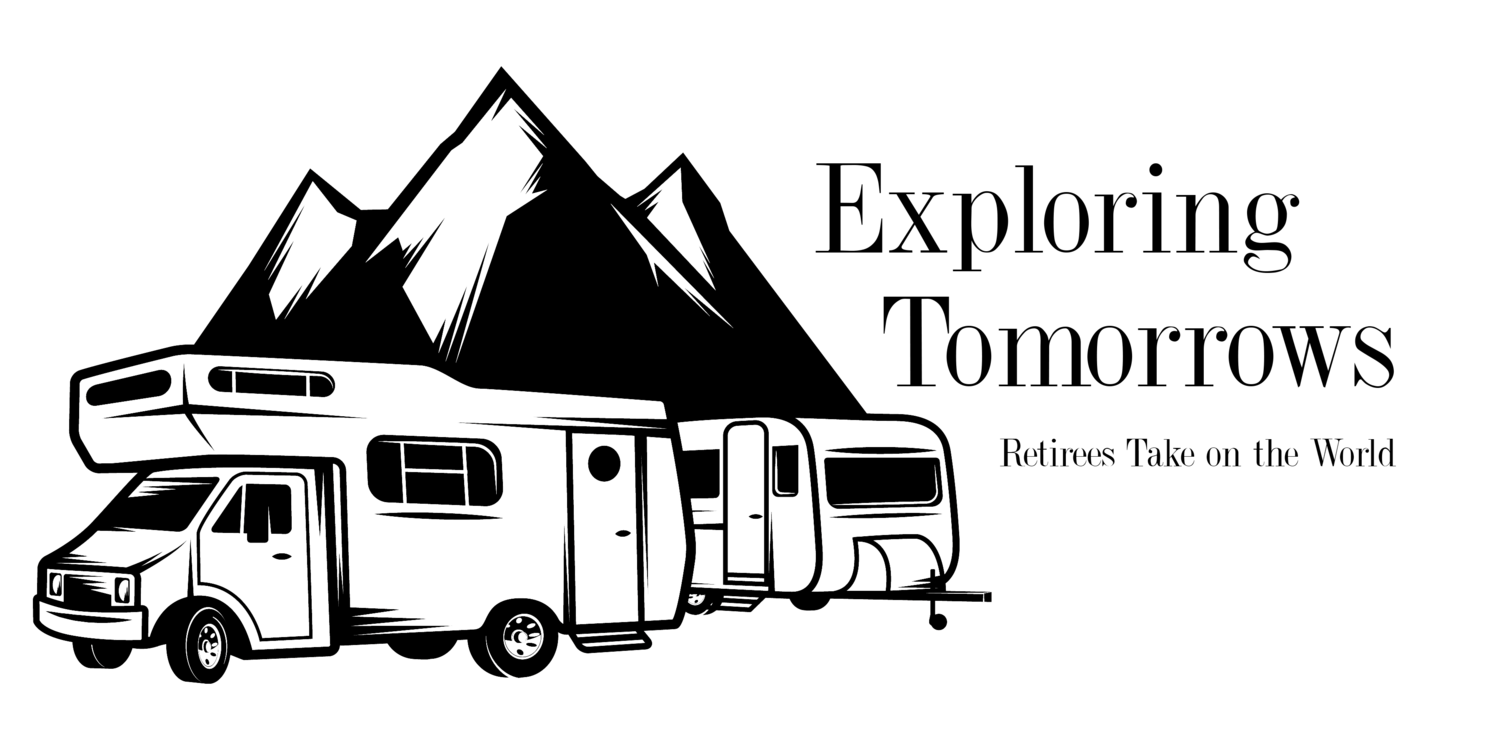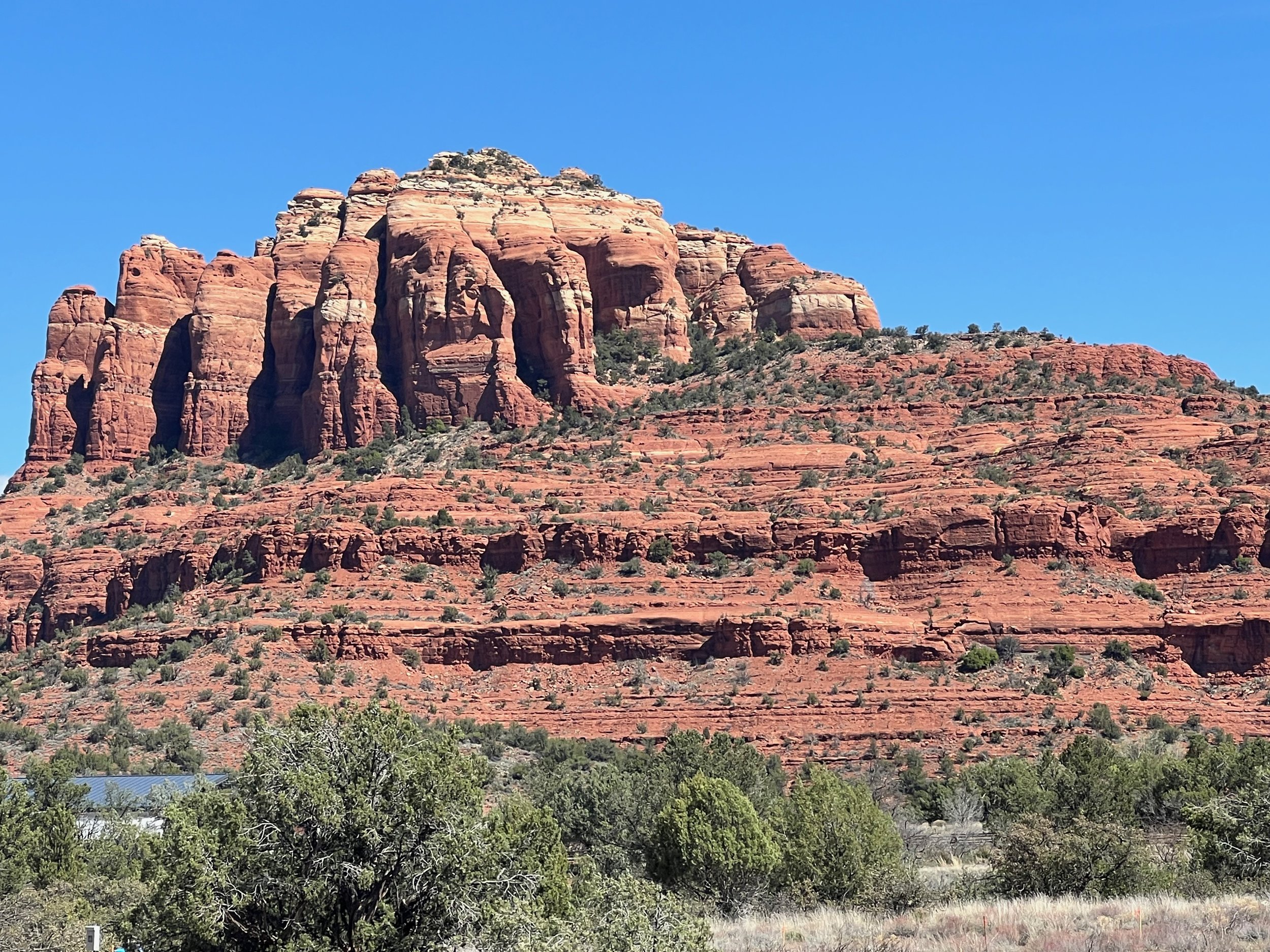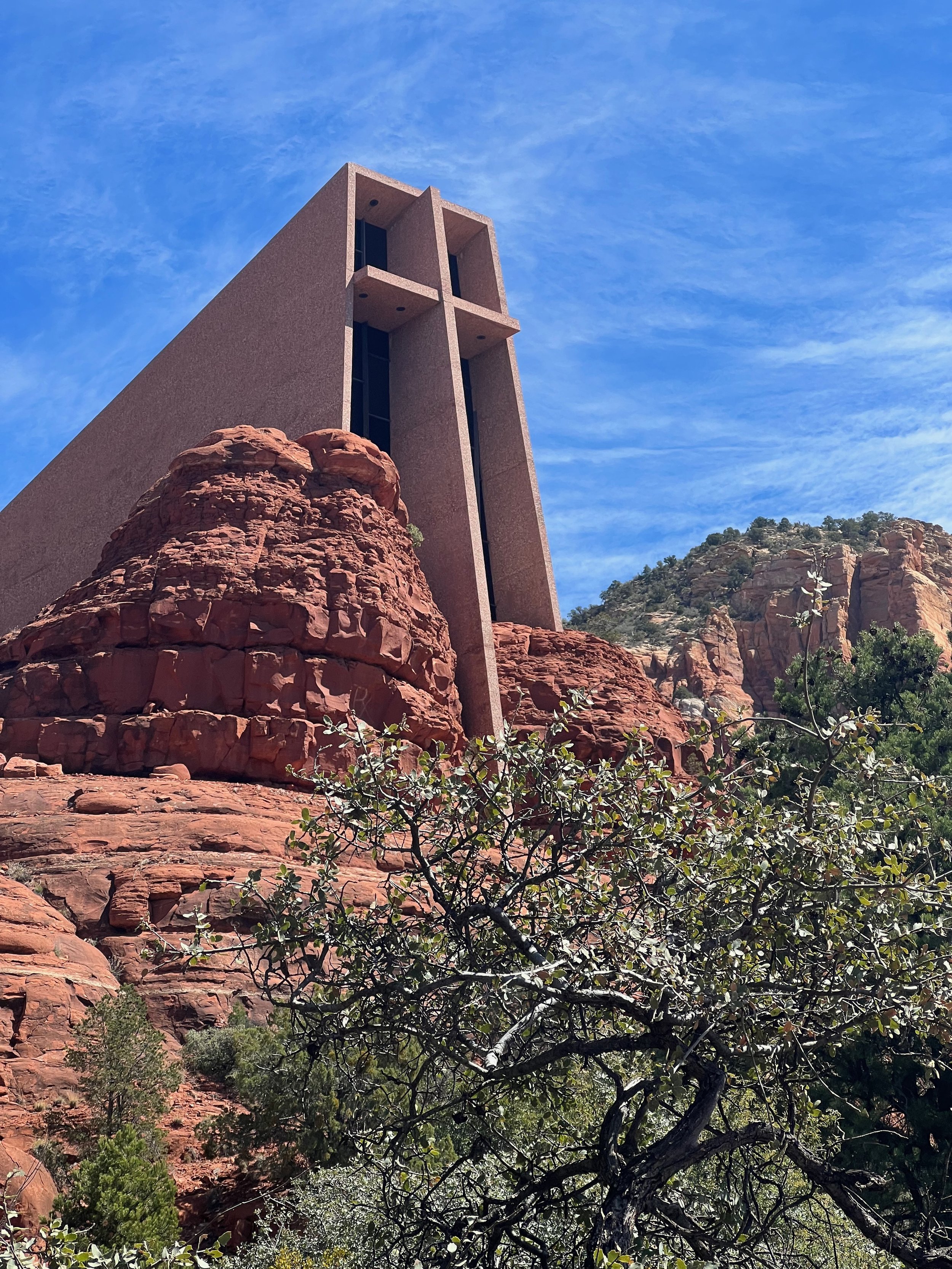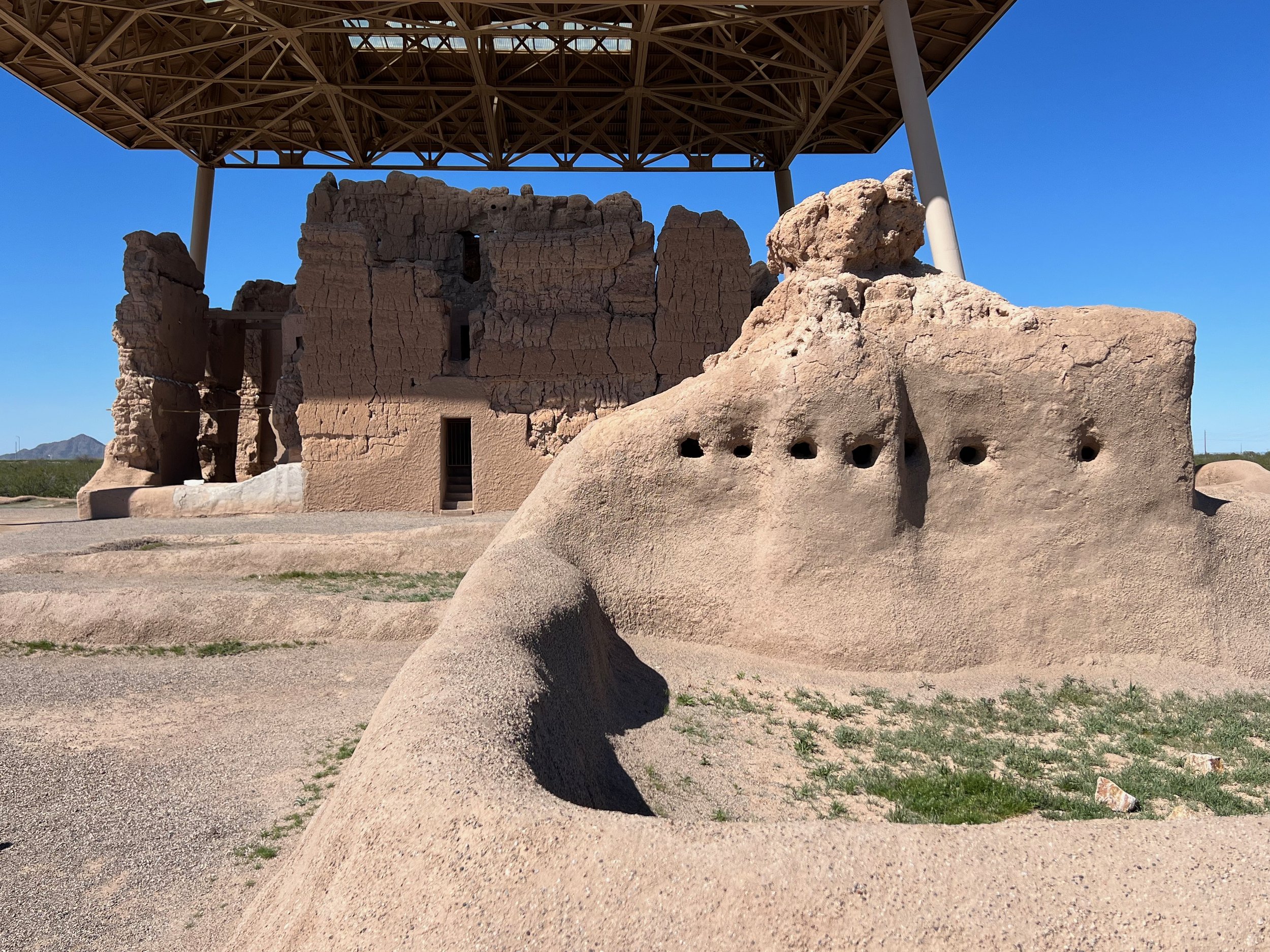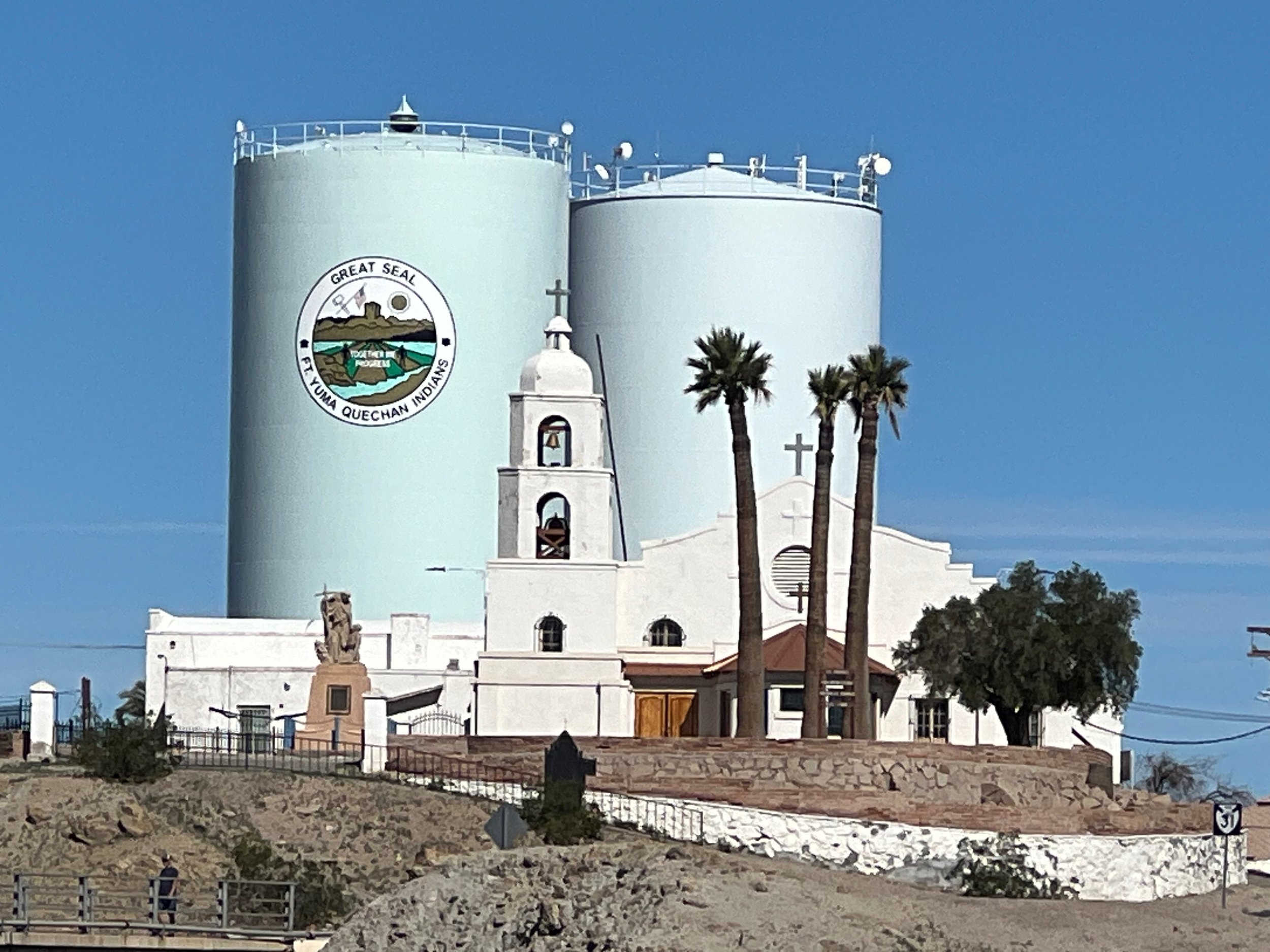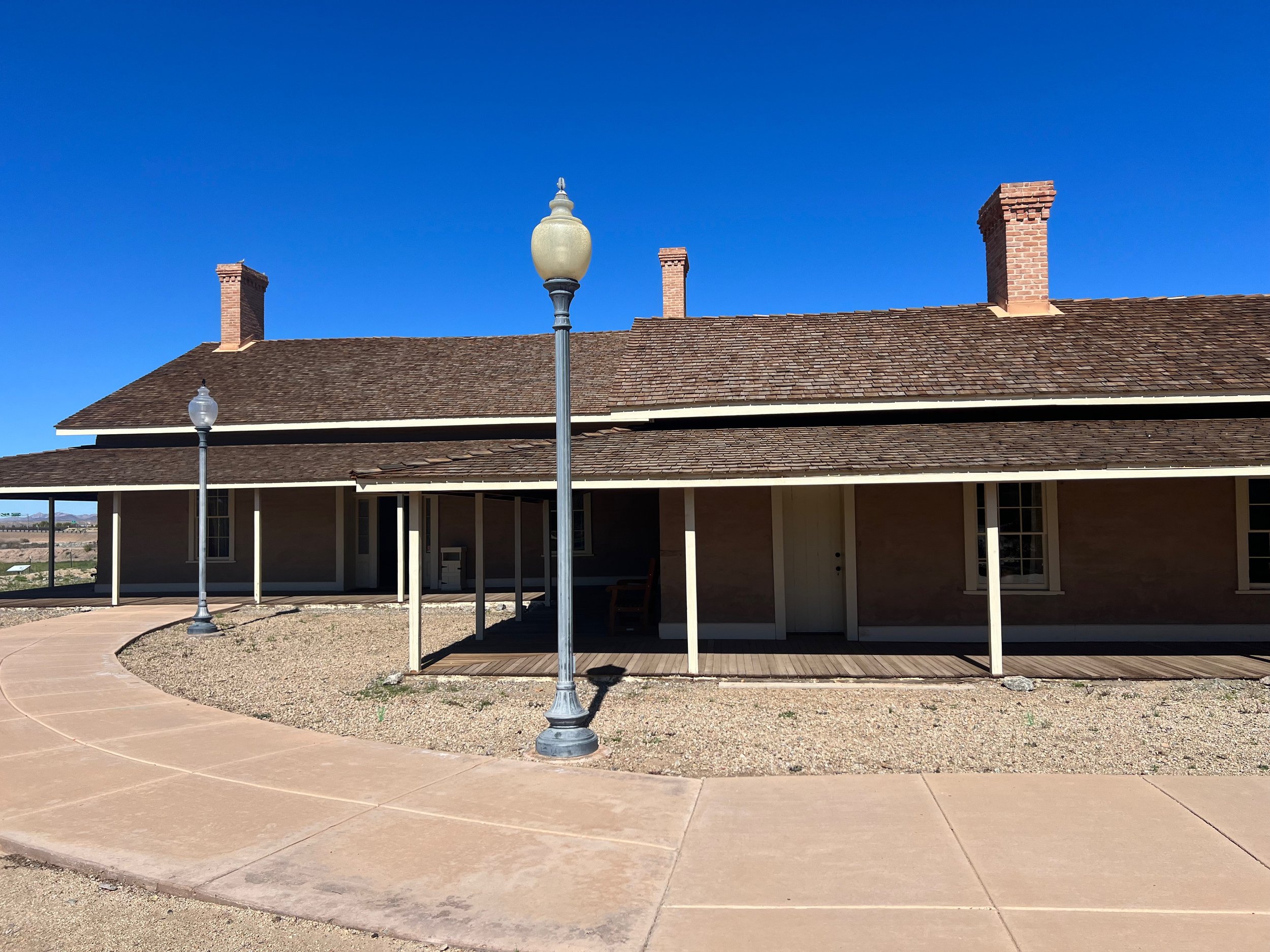More Stops in Beautiful Arizona Taking Advantage of our Thousand Trails Membership
/approaching the red rocks of sedona
We have been moving around the beautiful state of Arizona and have stayed at some great RV Parks as well as seen some very beautiful areas. Right now we are staying in the Verde Valley area which is close to Cottonwood and Sedona. This is one of the most scenic areas that we have visited. Every where that you drive, there is absolutely stunning scenery. The best part is that the road approaching our RV park has a fantastic view of the red rocks of Sedona in the distance and is is exceptionally stunning in the afternoon sunshine; and our 3 week stay is free with our Thousand Trails membership!
from the top of the campground looking across the valley to the red rocks of sedona in the distance
a glimpse of the verde river from the trail by the rv park office
I say free, but technically we bought the membership and pay annual dues as well as for our add on Trails Collection membership. So it cost money up front but I feel that after 3 years of this membership, we have definitely realized the value of what we spent up front and our stays are free or very cheap. This membership is one way that we can afford to live this lifestyle.
Thousand Trails Verde Valley is a huge RV park with many sections as the park road runs 2 miles down through the canyon. The spots at the top have beautiful views but you have to book those ahead of time and pay a small nightly fee. I didn’t call in advance to get one of those sites because Katie, Jon and Rosie had rented a cabin for the first week we were here and we wanted to be close to them. We are about half way down in the park and even though we don’t have the best views, it is still quite pretty. The cabin had a really nice view and we spent most of our time the first week there with them. More room for all of us in the cabin.
view from the rv park office. our campsite was in the area off to the left of the building with the orange roof and the cabins are in the front row facing the sandstone cliffs of the canyon.
I think that I will just give you a little teaser with pictures from scenic drives that we took in the Sedona area and save everything that we did while the family was visiting for a separate post. We actually didn’t do very much the second week that we were here; mostly staying in the RV park, catching up on laundry and other chores, etc since we were busy hitting all of the tourist attractions the first week. We needed a week of rest and relaxation after so much running around. The most touring we did were a couple of scenic drives, one over to Prescott, AZ and one scenic drive through the red rocks of Sedona. Here are a few pictures to enjoy; much more on this area to come in the next post.
red rock scenic drive near sedona
this chapel is built into the rocks
On our way to Verde Valley, we spent 8 nights at Encore Casita Verde RV Resort in Casa Grande, AZ. This park is also part of our Thousand Trails membership with the add on Trails Collection package. Casa Grande is about half way between Phoenix and Tucson and while wasn’t as scenic as the Tucson area, we found some nice views on drives around the area. The park we stayed at was fairly quiet with not many activities. Some neighbors stopped by to invite us to a few of the activities and we enjoyed the pool and hot tub at the park. Casita Verde is a fairly small Encore park and I think if we come back to this area, we will try one of the other Encore parks in Casa Grande.
I didn’t know much about the Casa Grande area, so when my college friend, Colleen and her husband Les, who live a little north of Phoenix suggested that they visit with us there and we go see the Casa Grande Ruins, we were immediately on board. They joined us at the RV park in the morning and after checking out our motorhome, we headed off to the ruins. Casa Grande Ruins National Monument is a small park by National Park standards, only one square mile, but definitely worth a visit if you are interested in Ancient peoples’ culture and lifestyles.
casa grande ruins
casa grande ruins
This area was an ancestral sonoran desert people’s farming community and they built this “Great House” whose ruins are preserved here in the desert. This is one of the largest prehistoric structures ever built in North America and its purpose remains a mystery. The visitor’s center offers a movie and small display area about the ancestral people, their way of life, pottery and most impressive the extensive canal system they built for crop irrigation. As the ancient people’s villages grew, farm land adjacent to the rivers was becoming scarce. To bring water farther from the rivers, they began to dig canals around 1500 B.C.E. They have discovered hundreds of miles of prehistoric irrigation canals in the Gila River valley where the “Great House” is located. Unfortunately, Casa Grande Ruins were destroyed over time by many visitors to the area taking souvenirs and carving names into the structure. Realizing the need to preseve the ruins, the site became part of the National Park service in 1892.
After enjoying the park, we found a local restaurant for lunch and had a very nice time catching up. Colleen and I were roommates for about a year and a half after college when we both moved to Pittsburgh to work. After Colleen got married, she moved to San Jose, CA and we haven’t seen much of each other over the years. I made a couple of trips out to California for vacations and visited and she stopped by once when she was in Pittsburgh for work. We think the last time we saw each other was at least 25 years ago. I am so blessed that we live the RV lifestyle and can visit family and friends that we rarely get to see through our travels.
sunset at ARaby Acres - had to put in at least one sunset photo
Before Casa Grande, we spent 3 weeks at another Trails Collection Park, Encore Araby Acres, in Yuma, AZ. Araby Acres was a great park to stay at and was much larger than Casita Verde in Casa Grande. It offered two pools and hot tubs which we definitely used quite a bit. Soaking in the hot tub really helped us get over the head colds that we both caught while staying there. This park had a very busy calendar of activities and entertainment. If you stay here in the winter, you really don’t have to leave the park for anything but buying groceries as you can keep busy every day in the park. Yuma was the warmest place we stayed and I can see why it attacts so many snowbirds.
our site at araby acres
I mentioned our stay in Yuma in the last blog post because we were able to travel over to San Diego and meet up with some cousins from there but I didn’t cover much about Yuma in the post. From my perspective, Yuma was the least scenic place that we visited in Arizona. It is a fairly flat, dry desert area, although you can see the foothils in the distance.
I liked this view of the water tower on the reservation land built right beside the mission church..
I was surprised how much farming occurs in Yuma, and discovered that many of the vegetables we eat are grown here. We passed a sign that blew my mind. It said that approximately 170 million servings of lettuce are produced in the Yuma area each day from November to April. Can you imagine that much lettuce being picked every day?
view of the colorado river
We found two interesting historical sites to visit in Yuma. The first park we visited was the Yuma Territorial Prison State Historic Park. In the mid 1800’s immigrants were traveling through Yuma on their way to the California gold fields. In 1850, a military post was established in Yuma and when gold strikes occurred on the Colorado River, Yuma experienced a boom. With the growth in the area, there was a need for a prison and the Yuma territorial prison was built in 1876. This was the first territorial prison built in Arizona and many legendary wild west bandits were incarcerated here. The prison offered pretty grim living conditions, especially the tiny dark cell, where prisoners causing trouble were put. I can’t imagine being in there in the heat of the summer.
the prison entrance
i thought it was a good use of space to build the watch tower on top of the water reservoir
a prison cell - isn’t it a bit cheesy how they had the cells set up with dummy prisoners?
the obligatory tourist photo
i can’t imagine being locked in this dark cell for days or weeks. I am sure many went crazy when in here.
We also visited the Colorado River State Historic Park which was the site of the Yuma Quartermaster Depot, an Army supply depot that stored and shipped supplies throughout the Arizona territory during the Indian wars. The park contains the Quatermaster’s office, Quartermaster’s house and kitchen, the Storehouse and Water Reservoir. You can tour through the buildings and learn how the Army handled supplies during the late 1800’s.
the quartermaster headquarters
the quartermaster’s house
displays of life at the fort and the quartermaster depot were in the buildings.
It is situated on the Colorado River that today looks like a small creek. In the late 1800’s, it was a large flowing river that was used to ship supplies up through the Arizona territory to Colorado. Looking at the docks there, it was hard to imagine shipping goods through that area since there is so little water today due to many dams built upstream from Yuma. The dams certainly control the flooding that they had to deal with in the past and I am sure provide reservoirs of water for many areas of the state.
this cardinal visited us daily at thousand trails verde valley.
I hope you enjoyed the recap of these stops in Arizona. More to come on our time in Cottonwood and Sedona in the next post.
